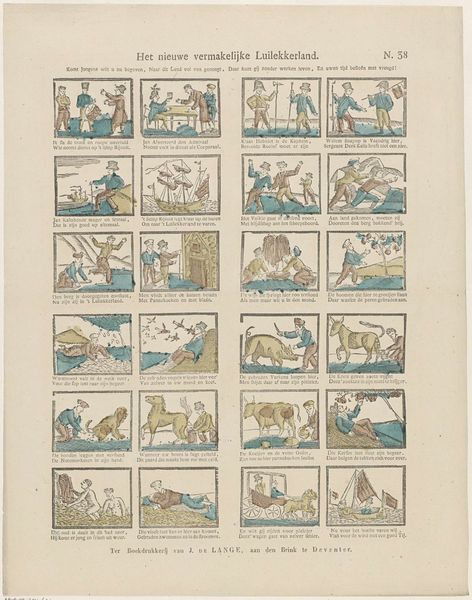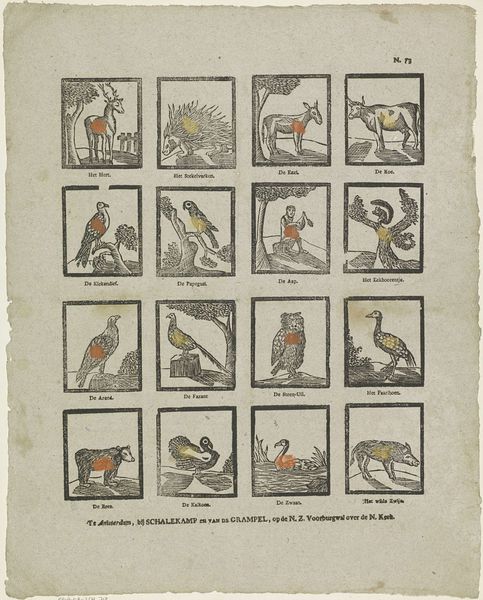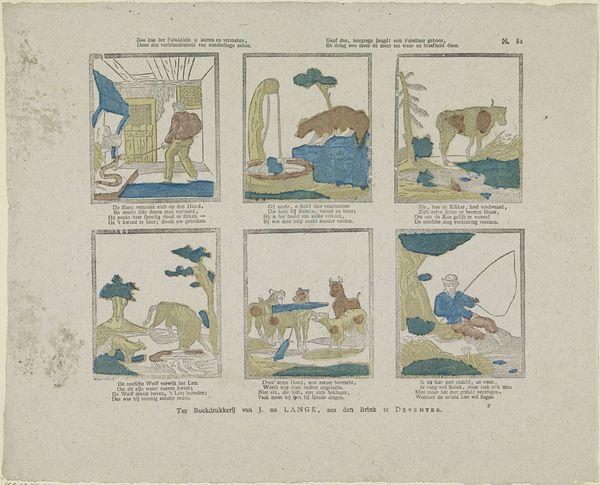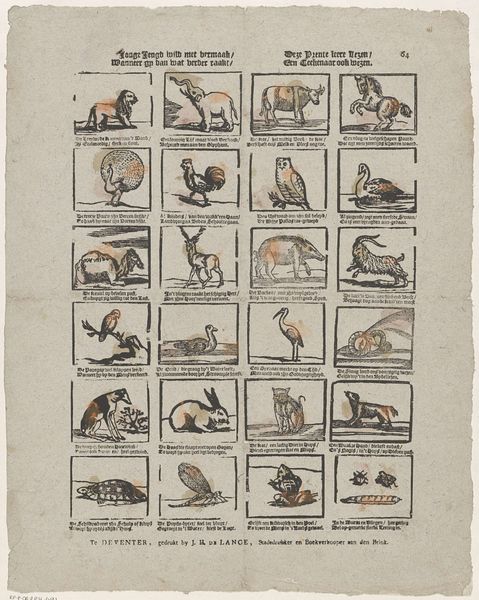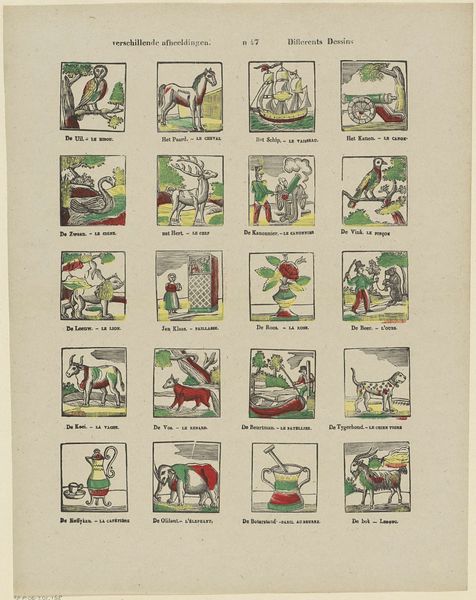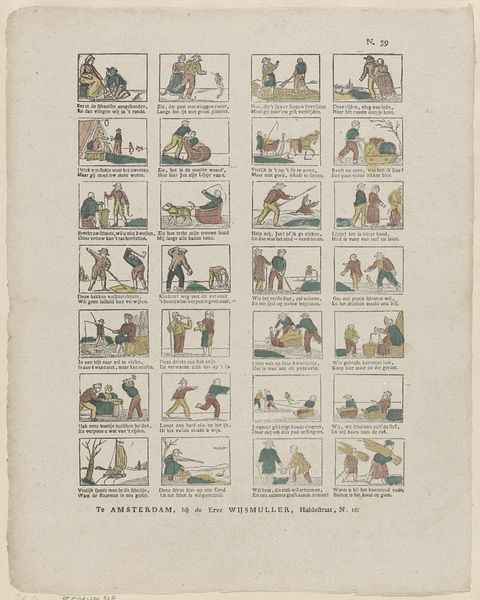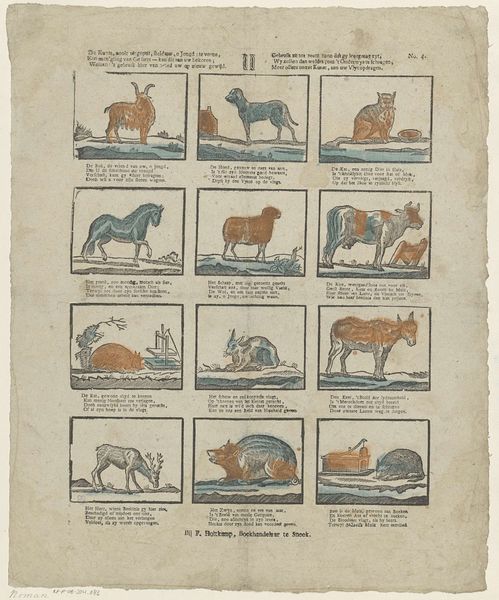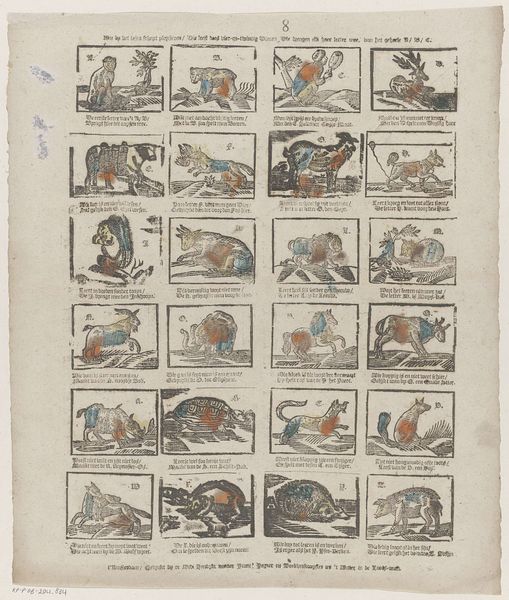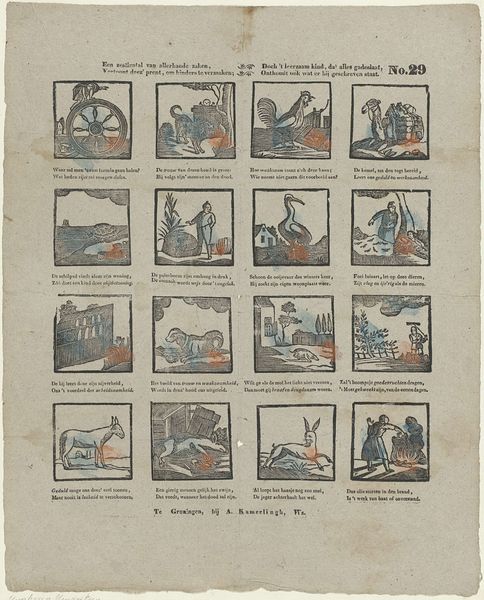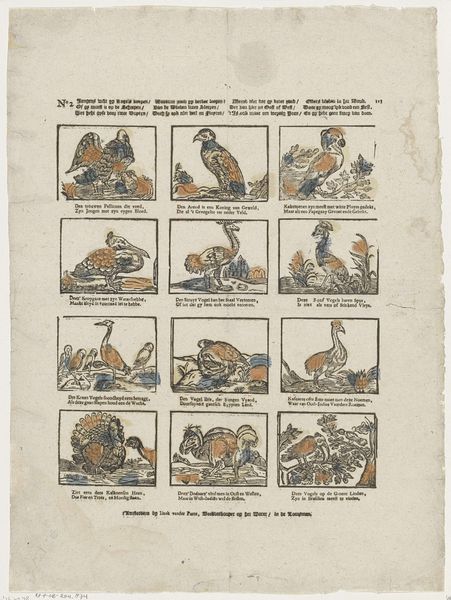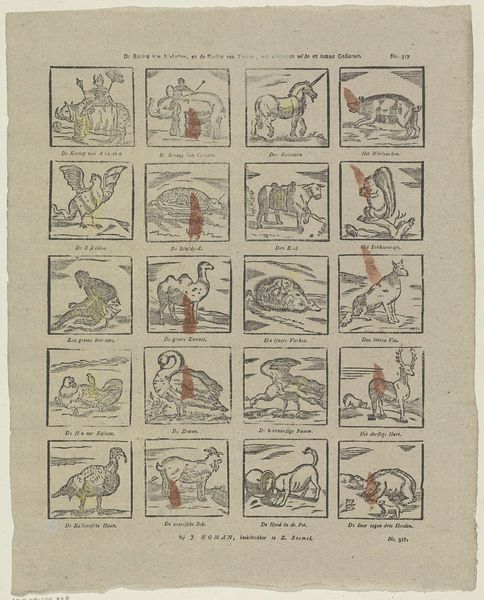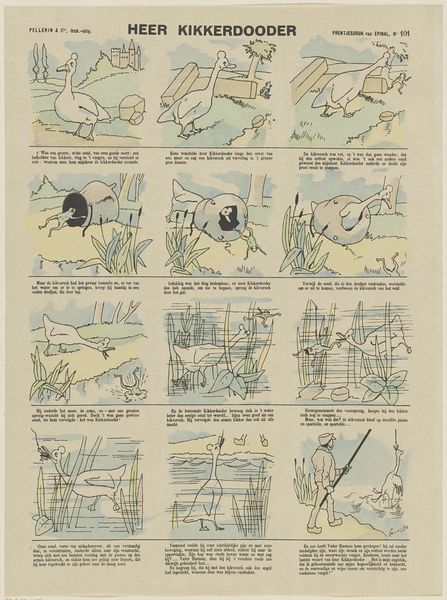
print, watercolor
#
animal
#
dutch-golden-age
# print
#
bird
#
figuration
#
watercolor
#
genre-painting
Dimensions: height 425 mm, width 335 mm
Copyright: Rijks Museum: Open Domain
Curator: Here we have "Dieren," a print made between 1828 and 1849. It's currently housed right here in the Rijksmuseum. Editor: It has a somewhat charming, naive quality, doesn’t it? The simple lines and limited color palette give it a rather old-fashioned aesthetic, or perhaps suggest an artisan with a limited technical expertise. Curator: The artist, Erve Wijsmuller, likely intended something quite different. Wijsmuller lived in a time of heightened focus on classifying and organizing the natural world. This work encapsulates elements of the Dutch Golden Age while portraying a specific understanding of genre. Editor: Tell me more about that— the classification. The animals do appear a bit… posed. Almost as if arranged for a formal portrait. Curator: Precisely. Think of illustrated encyclopedias, but for a broader, less formally educated audience. This piece, employing print and watercolor, depicts various animals in simplified settings, with clear labels below each image. This points to a society trying to categorize, codify, and ultimately, master the natural world through knowledge. The semiotics here is obvious; each beast, tree, cloud, and water conveys simple meaning. Editor: I see it. Almost a didactic exercise then—a tool for learning. But it's more than just objective cataloging, right? I wonder how this imagery served to support social values in that period. The orderly arrangement in those tiny boxes speaks, too, of the controlling impulse of mankind. What are they controlling? How and what do we select and consume to display? Curator: Indeed. Consider how readily such prints were available to a rising merchant class keen on displaying their grasp of scientific knowledge. The formal composition and limited detail allowed for mass production and widespread consumption. These works helped propagate shared understanding and a common vision of "Nature" under human management. And of course, it presents some assumptions regarding art that, today, feel exclusionary. Editor: So it’s less a detached observation, and more an active construction of an idea, promoted by access. The material itself -- watercolor on cheap paper – indicates the possibility for widespread acquisition, and perhaps suggests, in its construction of nature, to participate in societal consumption, not passive admiration. Well, it definitely offers a fresh way to look at how our understanding of nature has been mediated. Curator: Exactly. Examining this print today allows us a glimpse into the fascinating intersection of art, science, and social ambition during the 19th century.
Comments
No comments
Be the first to comment and join the conversation on the ultimate creative platform.
